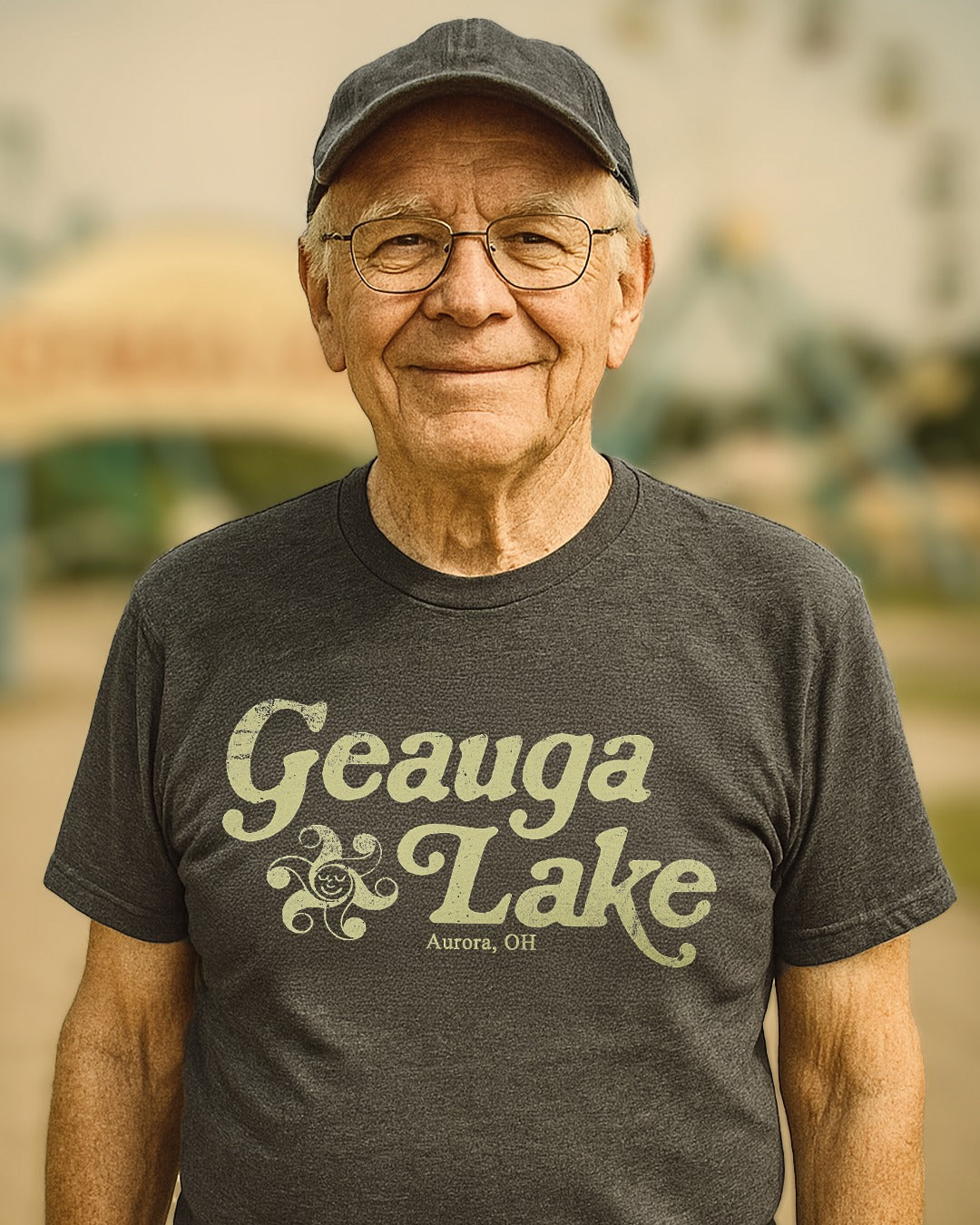“The biggest mall,
In all the world—
Is Randall Park!”
For several years in the late 1970s, that was a well-known jingle in Northeast Ohio. On August 12, 1976, Ohio native, and shopping center magnate Edward J. DeBartolo opened the Randall Park Mall to much fanfare. His brother Frank, who was also the project’s chief architect, cut the ribbon along with actress Dina Merrill (The Desk Set, The Courtship of Eddie’s Father, Operation Petticoat).
Get this Randall Park Mall T-shirt for 20% off. Just click on the image above! (Code: randallpark)
The mall maker dreams big
DeBartolo already owned 33 malls, including two in Greater Cleveland. Randall Park, however, was intended to be an entirely new concept from his previous ventures. The 143-acre complex in the village of North Randall, just outside of Cleveland, was conceived as a “city within a city.” Initial plans included not only the mall but a hotel, three high-rise apartment buildings, each 14 stories tall, and two office towers stretching 20 stories into the sky over the once quiet village. An entertainment center meant to compete with the Front Row Theater in nearby Mayfield Heights was also planned.
Only the hotel and mall were completed, though the latter, taking up 117 acres of the 143 DeBartolo owned, was quite an achievement. As the jingle said, it was the largest enclosed mall in the world, taking that title from the Woodfield Mall in Schaumburg, IL. For years after the grand opening, people from all over the region flocked to the wondrous Randall Park Mall.
In the late ‘70s, it almost lost its crown as the world’s largest to another DeBartolo venture, the Century III Mall in West Mifflin, PA, a suburb of Pittsburgh. That mall, though, came up just short of eclipsing its sibling center due to last-minute design changes. Randall Park did lose its spot, though, as malls across the U.S. and around the world got bigger and bigger. Still, Randall Park, at over 2 million square feet, featured over 200 shops and remained a top shopping destination in the Cleveland area under the DeBartolo Corporation’s management.
The “malling” of America
During the ‘80s and early ‘90s, the DeBartolo name was synonymous with shopping malls. So intense was the connection, it was suggested that the nickname of the Pittsburgh Maulers football team of the United States Football League, which Edward DeBartolo owned, was chosen in a name-the-team contest in part because it was a play on the family’s business.
Meanwhile, back in Northeast Ohio, Randall Park continued to flourish. Other malls and shopping centers like Beachwood Place and Euclid Square Mall sprang up in nearby communities while the older Southgate shopping center after it lost three anchors to Randall Park, underwent a makeover, and rebranded itself Southgate U.S.A., a move that brought shoppers back to that complex. But the shopper’s kept coming to Randall Park--- until they didn’t.
Shoppers make new choices
By the 1990s, consumer preferences were starting to change. Edward DeBartolo passed away in 1994 and with him, seemingly, the viability of indoor shopping malls. The popularity of strip malls with their easy access to individual stores, along with the rise of outdoor lifestyle shopping centers designed to look like quaint small towns, made the indoor shopping mall of the ‘60s, ‘70s, and ‘80s less appealing to consumers.
Some malls survived and managed to stay viable. Randall’s sibling, the Great Lakes Mall, in nearby Mentor remained healthy. Many more, however, became so-called ghost malls or were torn down altogether. That was Randall Park Mall’s fate but not before years of deterioration, neglect, and, finally, desertion. Indeed, for most of the 21st century, the mall was better known for being abandoned and in a state of ruin than it was for its days as one of Cleveland’s busiest shopping centers. That vision was created by a series of professional photographers and videographers who documented the mall’s decay in detail and posted it all on the Internet.
The digital era didn’t click with the mall
That would be the same Internet that helped reduce the number of shoppers visiting Randall Park and other malls, of course, as the popularity of online shopping increased in the late ‘90s and into the new century. If consumers weren’t going to new and fancier shopping centers, they were sitting at home (or at work) and making purchases from their computers and phones. They bought electronically not only from traditional retailers like Walmart, Target, and Best Buy but the biggest online merchant of them all, Amazon, who would directly figure into the mall’s final chapter.
By the early 2000s, the mall was only at 50% capacity and falling. At around that time, a technical college moved in. There was also a deal in the works for a church to take a big chunk of the space. The latter fell through, and Randall Park Mall closed on March 12, 2009. Demolition began in 2014 on parts of the mall. By 2017, the entire thing had been razed. In 2018, somewhat fittingly, Amazon opened a fulfillment center on the site of the old Randall Park Mall.





